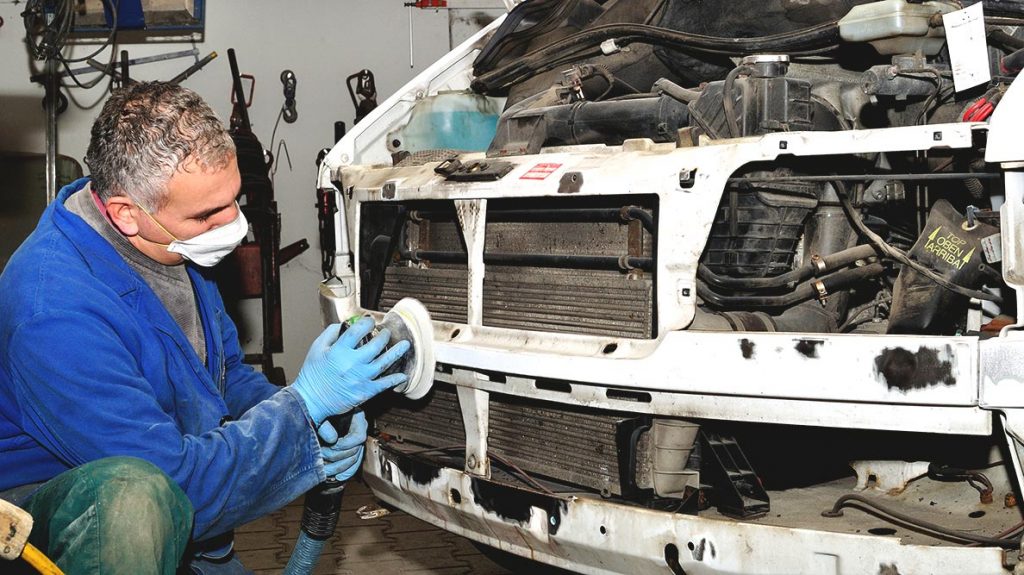COVID-19 has greatly impacted the collision industry. Between March and May 2020, we’ve seen a 30% to 80% reduction in appraisal appointments from insurers compared to the same period in 2019. The lockdown has drastically reduced the number of collisions while insurers have been calling on their internal appraisers to do regular or photo appraisals.
Why Is It Important to Remain Efficient?
Your profitability is more important than ever. Your business volume was hit hard in the last quarter. The market hasn’t quite resumed its normal activities and it will probably be a while before it reaches the same levels of stability as in 2019. Each repair counts. You must maintain a cash flow to face the upcoming challenges, pay your fixed and variable expenses and mostly, to make profit.
How to Remain Efficient?
Capacity management and efficient production are solutions that can help you. Here are a few tips to set the stage.
360 Appraisal
We notice that collision shops which use best practices to do appraisals are setting the stage for efficient production and:
- Very few supplements.
- Very little production interruptions due to unexpected events during repairs.
Having a dedicated space for appraisals, accurate identification of prior damage and mostly, taking time. We call this 100% tear down, blueprint or 360 appraisal. It is important to wash the exterior of the vehicle and dismantle it as much as possible to document the damage for a highly comprehensive appraisal.
Yes, but What About My Photo Appraisals?
Photo appraisals create a lot of headaches during production. The estimates are rarely accurate, and the repair often takes ten times longer than indicated on the initial appraisal. You also need to search and wait for missing parts. These are real jack-in-the-box cases.
Yet, with events such as the COVID-19 pandemic and our increasingly digital technological environment, it’s a well-rooted practice. Here are two tips to maintain your productivity, one for the duration of the COVID-19 pandemic and one for all situations until we have best practices for photo appraisals. Yes, it should eventually improve with artificial intelligence.
Tip 1: In this context of COVID-19, you have decided to call back half of your team to the shop. In theory, you gain twice as much space per technician. Give each technician a repair based on a regular appraisal and one based on a photo appraisal. They can start with the repair from the photo appraisal and when they are blocked waiting for parts for example, they can move to the one from the regular estimate.
Tip 2: Do you plan per severity, per load or both? Consider photo appraisals as non-drivables in your weekly planning. You will soon see the actual damage to the vehicle. If you can’t proceed, pause the repair in ProgiPlanning and use the wait time to do repairs from regular appraisals.
Control Parts Flow
It’s important to always have the right part at the right time for a steady production. There is no better auto parts ordering tool on the market than ProgiParts to search, find and purchase parts. You can use it not only for files from participating insurers but also for your other files, thanks to the One Stop Shop. It’s fast, easy and you can pay participating suppliers by credit card for your garage files.
Know Your Sweet Spot
Depending on your workload, adjust the size of your team for a progressive return to work while making some profit. A tool such as ProgiPlanning is a wonderful guide to profitability when the work volume is high, but also during tragic events such as those related to the current pandemic.
In Conclusion
Use good practices and closely monitor your profitability. Rather than stretching repairs to guarantee work for technicians, finish them as quickly as possible and then do tasks that add value such as special projects or training that you can’t normally do.
Feel free to contact me if you have any questions
—
Author: Alexandre Rocheleau
Collaboration: Charles Aubry
Editing and translation: Sophie Larocque
